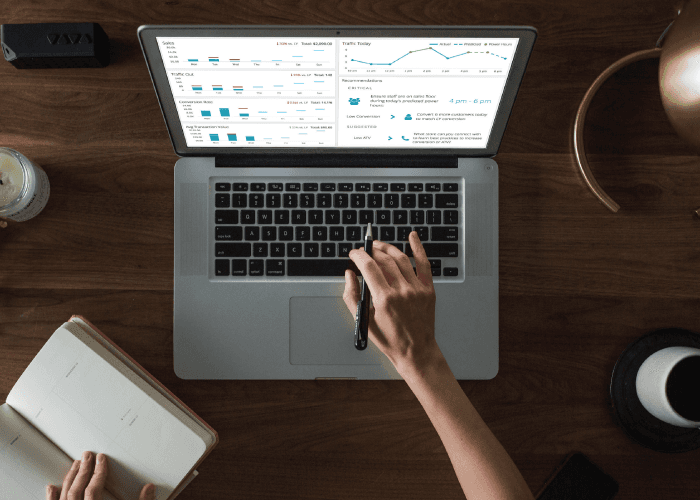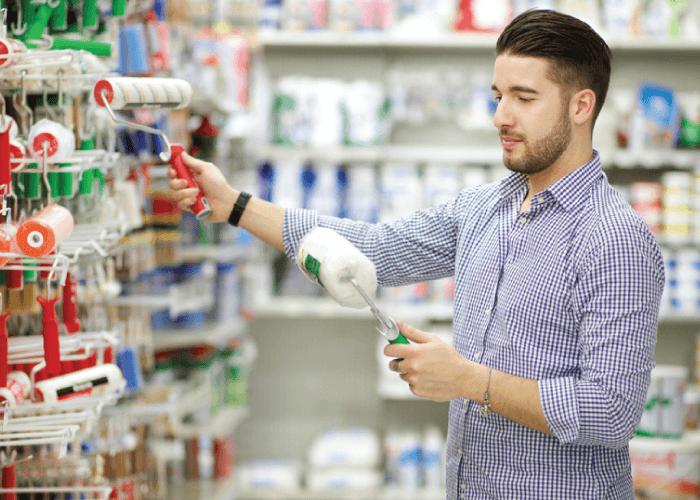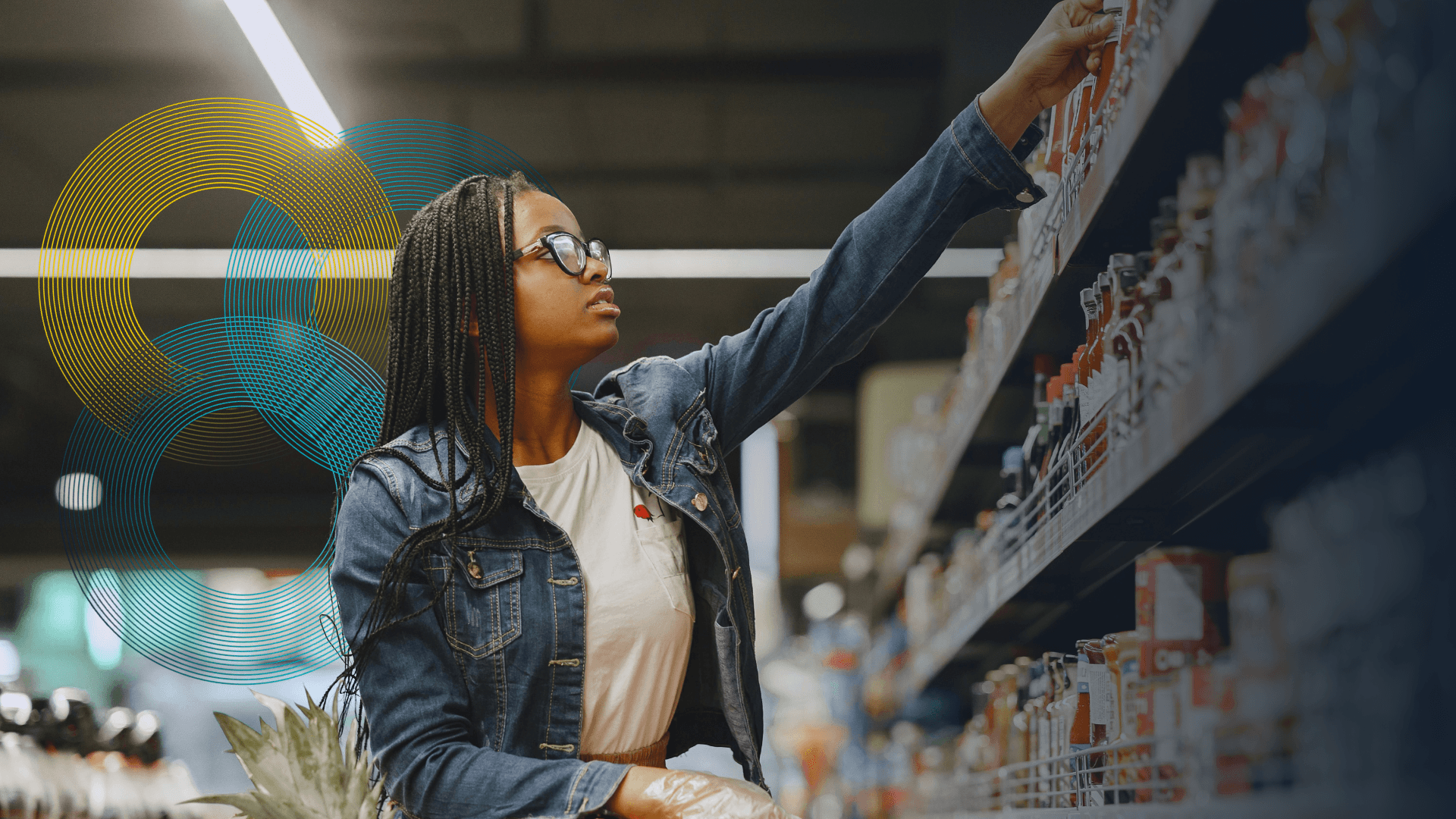How In-store Analytics Bolster Resilient Retail In The UK

On this page
Retail Economics has projected that the UK’s GDP will contract in 2023 as tighter financial conditions weigh on consumer spending (which accounts for around two-thirds of the economy). Moreover, average disposable income could fall further by 3.4% this year due to double-digit food and energy inflation. However, it’s not all bad news. Critical times of flux like this often breed ingenuity and innovation.
Key trends retailers will have to keep in mind as they strategise include
Recessionary shopping behaviours as cost-conscious shoppers prioritise spending on essentials;
Smart stores are on the rise as shoppers are increasingly searching for connected customer journeys;
The role of stores is changing as less-affluent consumers avoid online delivery and/or return fees, driving intentions to shop in-store;
Consumers demanding digital integration in-store, including convenient payment options, additional product information, and store collection
With so much pressure on the cards, UK retailers must seek solutions to streamline store operations, optimise labour, embrace digital elements, and maximise marketing ROI. Reliable in-store data empowers proactivity and testing – two vital approaches for besting an economic slump. Here’s how in-store analytics can help brands build and maintain a resilient retail business in 2023 and beyond.
READ MORE: Why Retail Media Networks Are The Future For Stores
Encouraging Unified Retail
An omnichannel (or ‘unified’) customer experience is fast becoming an absolute necessity in the modern retailer’s arsenal. When online and offline offerings are seamlessly integrated, shoppers are more likely to spend more. A recent report also shows that 60% of consumers conduct online research before making a major purchase, and 80% of the time, a consumer returns a product in-store and spends the refund with that same retailer.
With customers navigating an ever-growing number of touchpoints, retailers must ensure that each is optimised for maximum efficiency. As shoppers become more intentional and insightful, customer experience becomes the key differentiating factor in decision-making.
This means that retailers are collecting more data than ever before. Data from every touchpoint, from loyalty cards to PoS data through to in-store shopper journeys and security systems, is collected. But the real mastery comes in at synthesis (not just collection). When this mass of data is structured in a way that is intuitive and easy to understand, it transforms into actionable insights. These insights cut friction from the omnichannel experience for both shoppers and store teams and in doing so, unify retail.
Store Data Fuels Innovative Marketing
In-store analytics, like traffic and full path analysis, are viable ways to measure shopper engagement accurately. As a metric, engagement helps establish a pricing scheme for third-party visual merchandising or investment in the retailer’s marketing ecosystem. This data is also critical to establishing retail media networks (RMNs), which collect, and are fuelled by, shopper data.
The basics remain true: good data breeds better results and the best ROI. Impression generation metrics and CPM (cost per mille) can be calculated once a store location has accurate footfall data. Critically, this type of data allows retailers to create a viable monetisation engine they can sell to marketers.
With access to customer purchase data, preferences, and shopping journeys, as well as the ability to put brands in front of consumers when they’re most willing to be influenced, the popularity (and resultant rollout) of retail media networks is set to boom in the coming years. Early adoption would serve as a resilient investment for retailers in the UK, especially as consumers tentatively begin regaining confidence and embracing in-store shopping once more.
With the right strategy and implementation, retail media networks are an excellent way for retail businesses to engage with customers, build brand loyalty and increase sales. By leveraging the power of these networks, retail businesses can effectively target their customers, create a more engaging shopping experience, and drive conversion through personalisation.
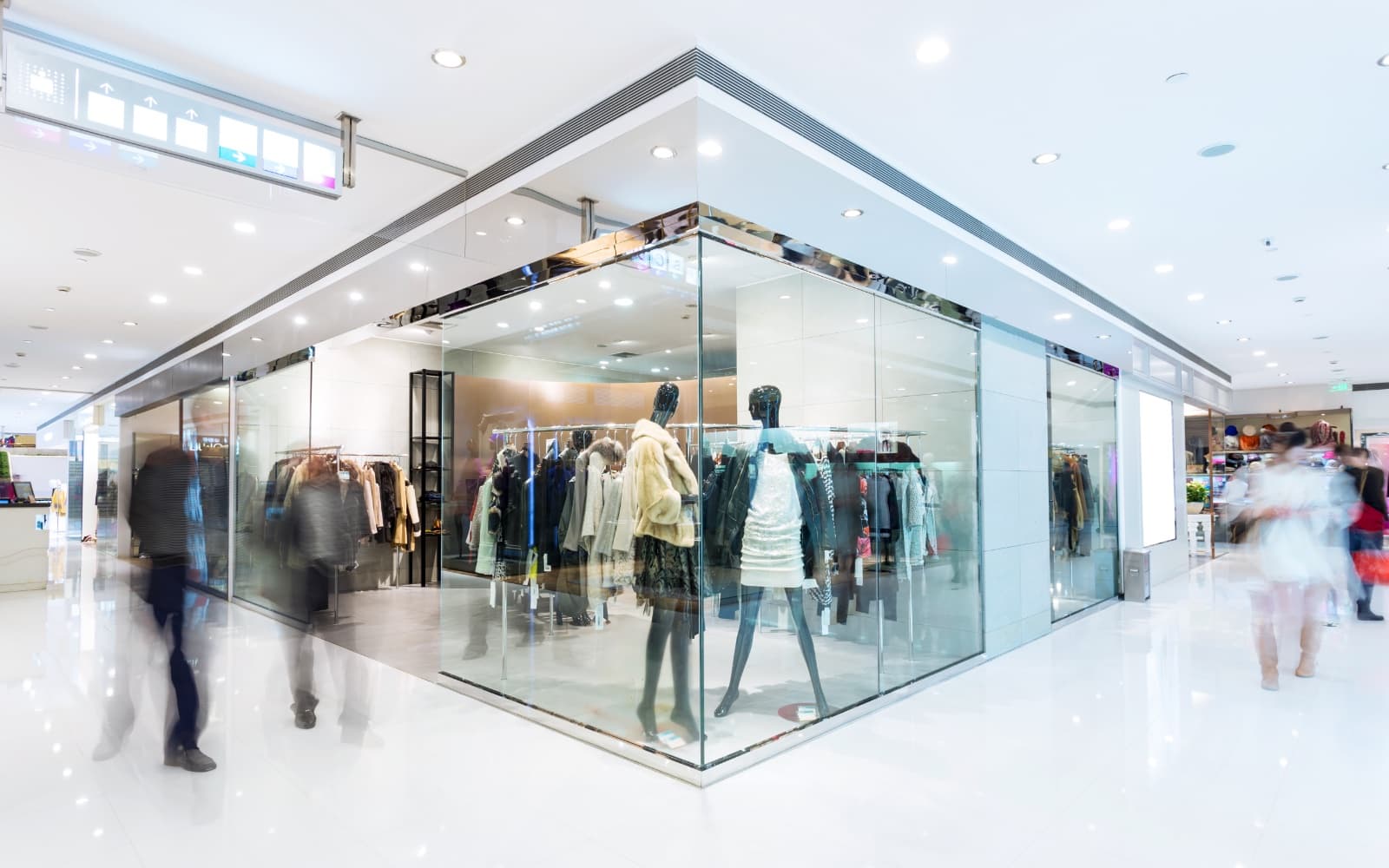
Like media networks, visual merchandising also benefits from a data-backed approach. When retailers can most accurately determine which displays and store zones are highest in traffic, engagement, and conversion, they can benchmark best practices. Conversely, when a zone or display is consistently low on traffic, this can be flagged and adapted to enliven that space. Now visual merchandising decisions no longer have to be made on instinct alone.
Real-time store data provides empirical evidence to optimise creative and operational decisions. With best-in-class tech, retailers can measure the impact of store layouts, product placements, and other merchandising decisions on shopper engagement and store performance metrics including conversion, average transaction value (ATV), and shopper yield.
CASE STUDY: How Japan’s Leading Eyewear Retailer Drives High Performance
The Role Of Analytics In Personalisation
A whopping 71% of consumers report feeling frustrated when a shopping experience is impersonal. Furthermore, 91% of consumers say they are more likely to shop with brands that provide offers and recommendations that are relevant to them. This makes personalisation near-impossible for the modern retailer to ignore. Personalization, however, is only as effective as the data that powers it.
Multichannel interactions and syndicated data from loyalty cards and apps have increased the ability for retailers to create a consolidated, up-to-date view of customer behaviors and preferences. With accurate data about visit duration, dwell zones and durations, and heat-mapped shopper paths, retailers can more effectively personalise the consumer experience.
By securely collecting and analysing this ocean of data, retailers can more intelligently deliver personalised, timely offerings via mobile devices or in-store digital signage. These curated promotions help improve the shopping experience with innovations that consumers care about.
Operationalising Data For Shopping Centres
When decisions are backed by analytics, shopping centre stakeholders can streamline operations, drive profitability, increase sustainability, and promote data monetisation. What’s more: these analytics are instrumental in automating business processes. Large-scale automation frees time for venue teams to focus on building and maintaining strategic partnerships with occupiers and stakeholders.
On the ground, labour efficiency can be fostered through the identification of ‘power hours’. Isolate traffic cycles across the hour, day, week, or year and align shopping centre staff (security, housekeeping, maintenance and management) to these high-traffic business hours. Add staff when traffic is projected to peak and remove when traffic is set to subside.
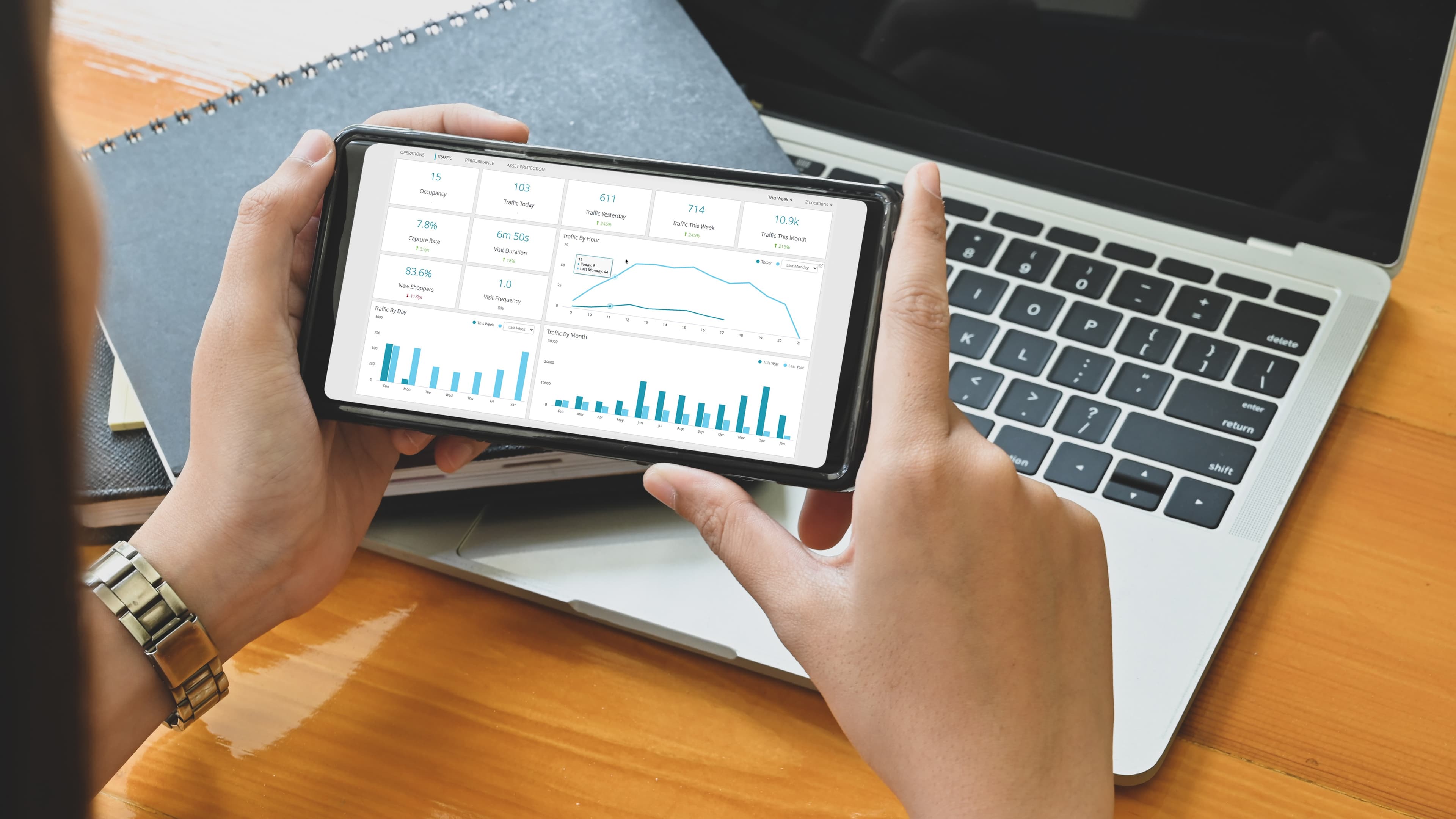
Other areas where analytics deliver the difference in shopping centres are
Sustainability: Analytics help stakeholders create greener venues. Traffic and occupancy forecasting can help centres reduce energy consumption, lower operating costs, control ventilation systems based on demand, lessen wear and tear on facilities and equipment, and avoid GHG penalties.
Security: Streamline evidence collection with video recording and management to identify issues instantly and remotely investigate with web and mobile applications. Remote investigations save retailers and centre stakeholders time and money.
Investment: Manage and acquire world-class venues with growth plans backed by trusted data. Apply learnings from one venue to the next as a means to test and analyse future-fit investment, like amenity improvements, mall retail media networks, mobile device detection, and loyalty programmes.
Insurance: Accurate occupancy data can be collected and measured objectively and continuously to include as part of COPE data. This data can deliver an actuarial basis for risk assessment over time and potentially lead to lowered commercial property premiums.
Shopper behaviour: Gain immediate data about visit paths and durations to better understand centre performance and business opportunities. Measure cross-category spend behaviour throughout the property to gain valuable insights into category and store patterns.
It is common for centre owners to recoup the investment in analytics technology faster by monetising the data that is gathered by them. This can be done by supplying value-packed analytics as an add-on service to tenants, or the data can be sold to investment firms, media outlets, or advertisers. Either way, it is a forward-thinking approach to resilient investment in the future of commercial real estate.
READ MORE: How Automation Transforms In-Store Operations & Experiences
Each year, the Retail Technology Show brings together Europe’s most forward-thinking retailers and leading tech innovators, uniting change-makers to drive the industry forward. As an industry leader in the analytics space, we’ll be attending the Retail Technology Show on 26-27 April in Olympia, London. Stop by our booth (#5E14) to chat with our team about the future of your retail operations.
About the author:

Ashton Kirsten, Global Brand Manager, RetailNext
Ashton holds a Master's Degree in English and is passionate about physical retail's unbridled potential to excite, entertain, serve, and solve problems for today's shoppers.

